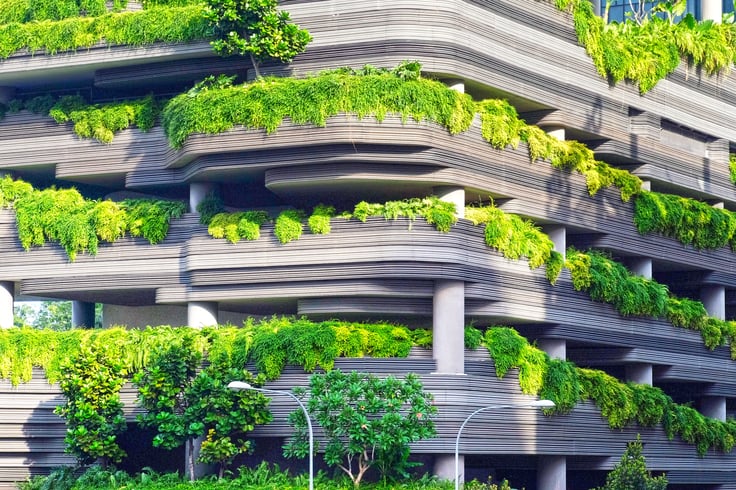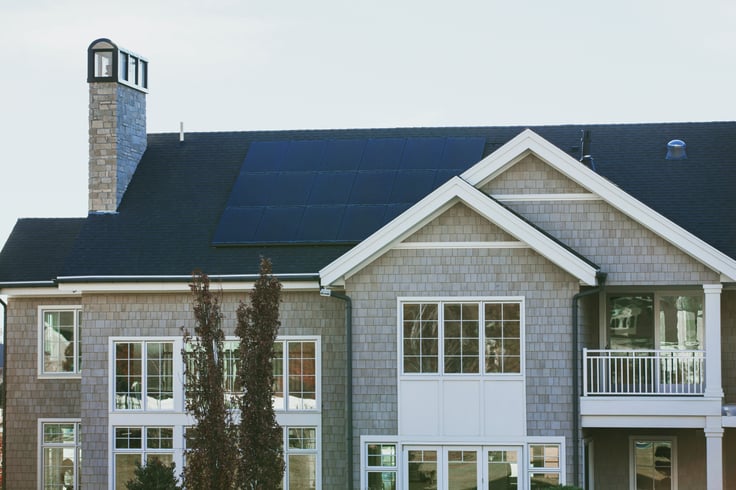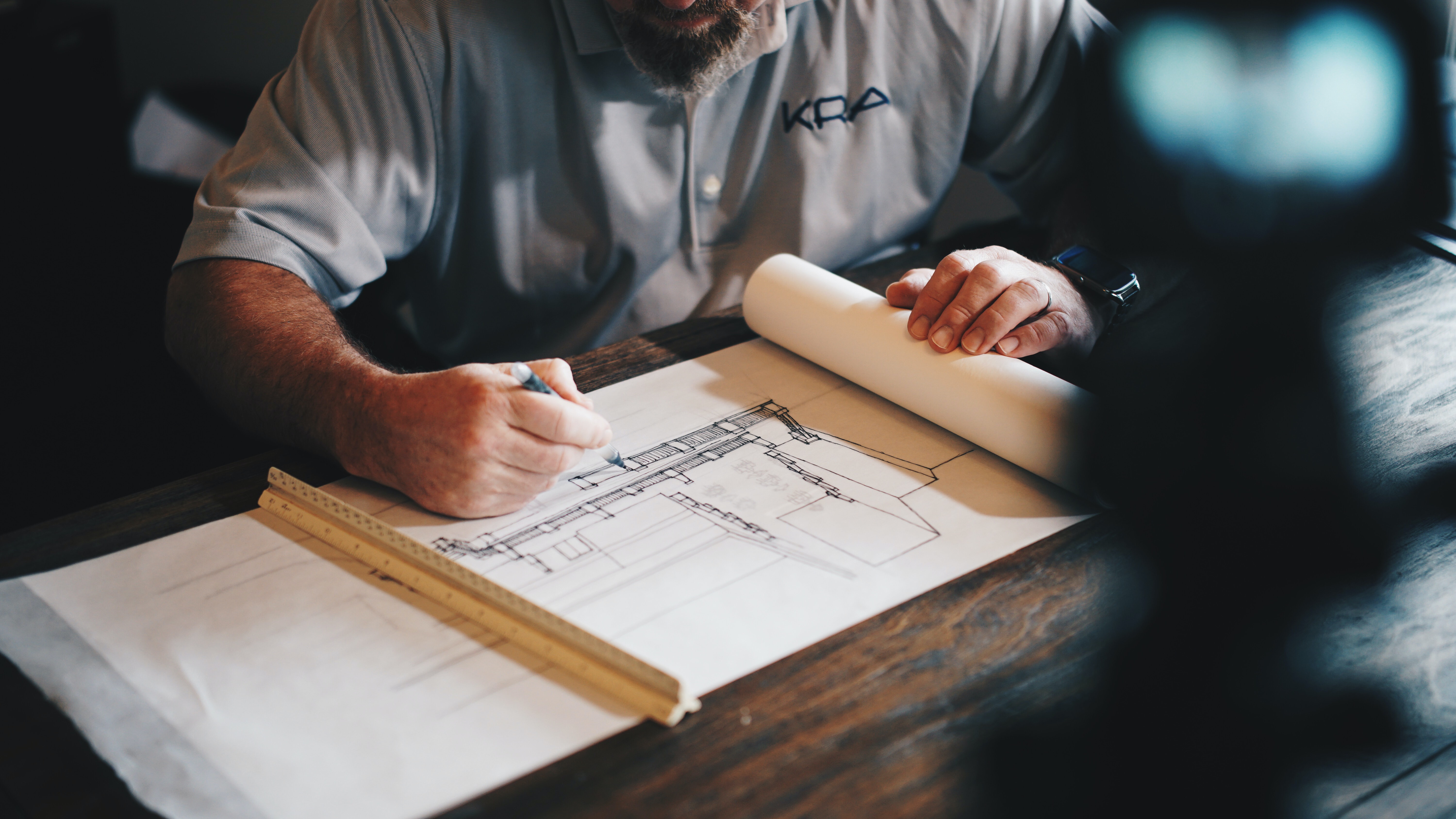‘Sustainable development’ can mean different things to different people. And while the process can vary wildly, the end goal is pretty much the same for all developers.
The environment, typically, is what comes to mind when talking about sustainable development but it’s actually more of a catchall term – factoring in social, economic and environmental impacts.
Fundamentally, the positive impact of your development needs to outweigh the negative impacts (or at least be neutral) for it to be considered sustainable.
In other words, sustainable development argues that developers need to weigh up people, profits, and the planet when choosing how to proceed.
Different approaches to sustainable development
Sustainable developments broadly fall into three groupings:
- Landscape led – design takes cues from the surrounding area. Blends in with the local environment, without detracting from it.
- Community focused – a prioritisation of social wellbeing and community. Creating places where people want to live, with easy access to amenities e.g. providing affordable office spaces to encourage local businesses and reduce traffic caused by commuting.
- Future proofed – using high-quality materials from the start to ensure buildings are built to last. More common in new-builds, but this sustainable principle also applies to conversions.
Although these approaches have slightly different end goals, the aim of reducing the long-term development impact is the central driving force for them all.
A big part of that aim is ensuring sustainable practices across every stage of the development process, including:
- Site sourcing
- Design
- Materials
- Technology
- Utilities

The rise of sustainable development
Although the core concepts of sustainable development were discussed as far back as the 1960/70s, the term gained popular recognition after the publication of the 1987 Bruntland Report. This pivotal report defined sustainable development as:
“development that meets the needs of the present without compromising the ability of future generations to meet their own needs.”
The goal of sustainable development has pretty much remained the same for the last 34 years. However, with the rapid advancement of technology and increasing public pressure, the pace of adoption within the development community has accelerated in the last decade.
Global political discussions – like those had in 2002 at the World Summit on Sustainable Development – led to incentive schemes from national governments to encourage greener practices (although these took a while to filter down and manifest in direct action from the property industry).
Widespread adoption really took off in the last decade or so, largely driven by grassroots movements. They raised awareness about sustainability and, as a result, increased market demand for sustainable developments (giving developers further incentive to pursue them).
But this prompts a question – if sustainable development is so dictated by consumer demand, can we trust that it is here to stay and not a passing trend?
Sustainability vs the homeownership dream
As the situation stands currently, sustainability seems to be an irreversible force.
It’s unlikely that popular opinion is going to shift drastically back the other way. Consumers aren’t suddenly going to turn around and demand that developers should start causing more damage to the environment – and to focus less on their wellbeing while they’re at it.
The only factor that could stand a good chance of stopping sustainability in its tracks is money.
People want to buy their own home. As house prices skyrocket, putting the homeownership dream head-to-head with sustainability issues could see a lot of people bending their morals if the alternative is never being able to afford a home of their own.
It’s also the reason that some developers are still wary of sustainable projects. After all, if they’re paying a premium to build but not able to charge a premium when selling, does that cost simply become a tax on developers with good intentions?
So, let’s take a look at how much the price of green developments really cost – and how this can be offset.

Why a sustainable approach could be less expensive than you think
Some sustainable add-ons, like solar panels, can increase the initial outlay for your projects. But they’re not the only way to make a project more sustainable.
Using recycled or repurposed materials during the build can be a cost-effective way of reducing your environmental impact and saving money.
Plus green buildings are typically more efficient (and therefore cheaper to run). For those buyers who aren’t willing to pay a premium for a ‘sustainable’ label, the promise of (and supporting data for) lower monthly bills can win them over to a higher initial cost. Or, if you’re in the build-to-rent space and include utilities in the price, you can profit from these low running costs yourself.
Green builds can also be more likely to get planning permission. The National Planning Policy Framework includes a presumption in favour of sustainable development. This doesn’t mean an automatic green light for your project, but it should be an encouraging sign and makes the potentially higher development costs less daunting.
It also means you're less likely to spend time and money on planning appeals, allowing you to reduce costs at other stages of the process.

How LandInsight can help you tap into sustainable practices
One of the big ways LandInsight can help boost your sustainability is by giving you a clear idea of what’s already being done in an area. Looking at past planning applications on LandInsight will show you the type of projects that are getting approved and help provide justification for your own development.
Using the Planning Search function on the Planning Applications layer of LandInsight, you can search using key terms related to sustainable development.
Obviously “sustainable” and “sustainability” are good for getting a broad overview of the type of projects happening in the area, as well as showing you where your competition may be, but using narrower search terms, such as “solar”, “photovoltaic”, “passive design'' or “energy efficiency” could yield results more specific to your project.
Whether or not you’re fully sold on sustainable development, it’s worth taking a look at the sustainable projects going up in your area – paying particular attention to the sell price.
Plus of course, using LandInsight cuts down on the need to drive around looking for sites, or the frequency of site visits. That might not sound like much, but every little helps, right?
The future of sustainable development
Sustainable development looks like it’s here to stay. And isn’t necessarily as expensive as you may think.
Repurposed materials, increased energy efficiency and a premium price tag are all ways you can make sustainable developments work for your profit margin – and benefit the environment at the same time.
There will always be some people unwilling to pay more for a sustainable label, but with the ongoing momentum of sustainability, this shouldn’t be a deterrent to developers. In fact, it’s likely that many buyers will not just expect, but demand greener homes in the near future – and anticipate that a slightly higher price tag may come with them.
It’s also worth considering that as sustainable development becomes increasingly more mainstream, premium pricing may not stick around. Now could be the best time to throw your hat into the ring while there’s still the opportunity to keep build costs low AND charge a premium.
The green belt may seem like a counterintuitive place to consider for a sustainable project, but it may not be just as green as you think and can help keep land costs low.
Shannon is a Community Content Specialist at LandTech. Her marketing skills started young, when she designed the logo for her primary school (which they still use today). In fact, she's so persuasive, she once convinced John Bishop to give up his seat on a train (first class, no less).

